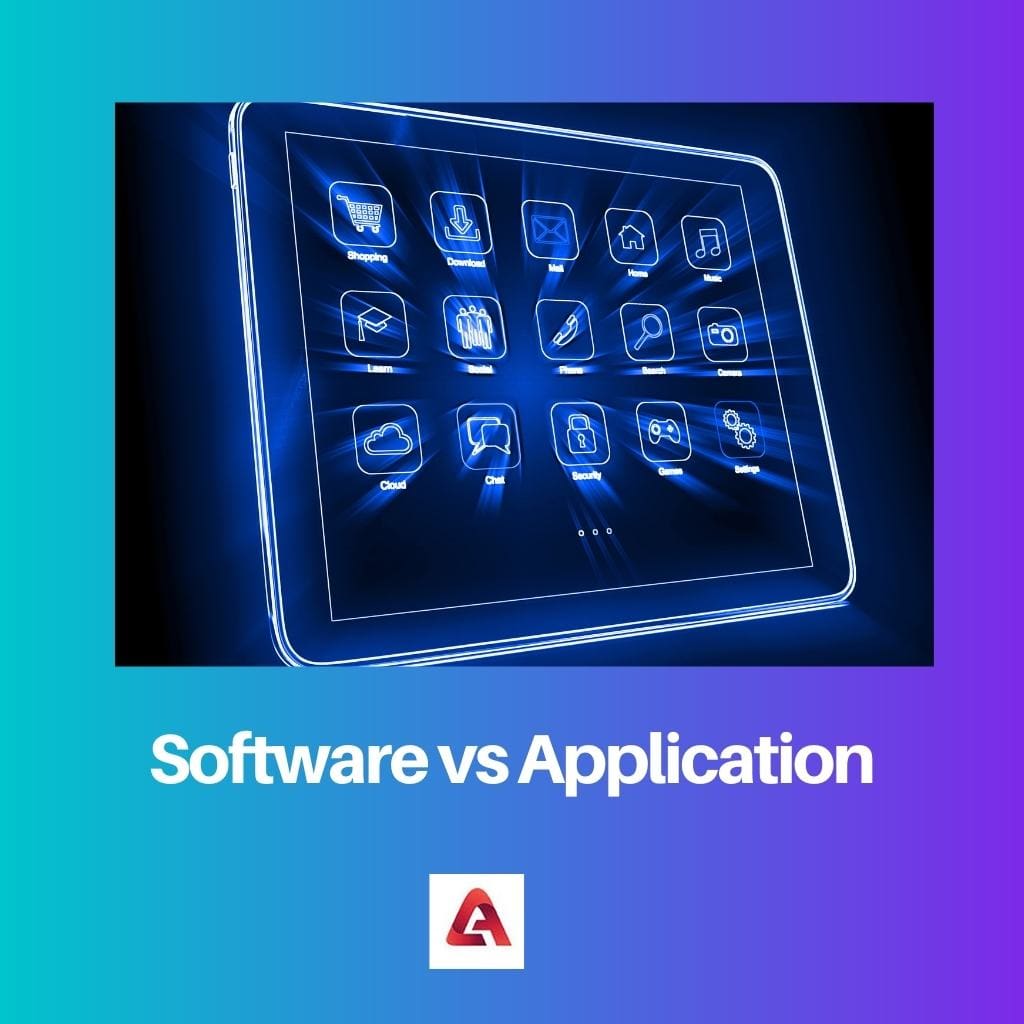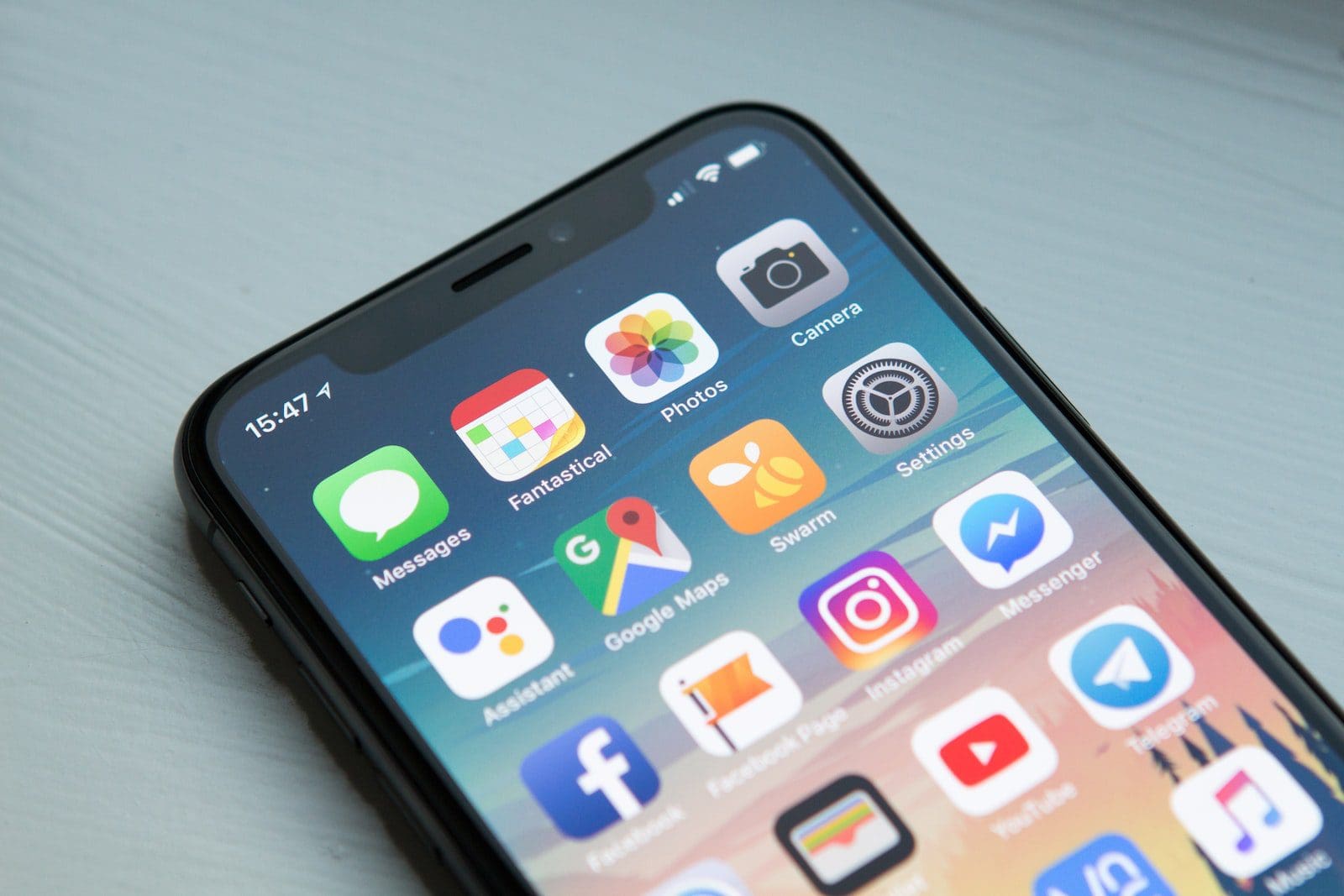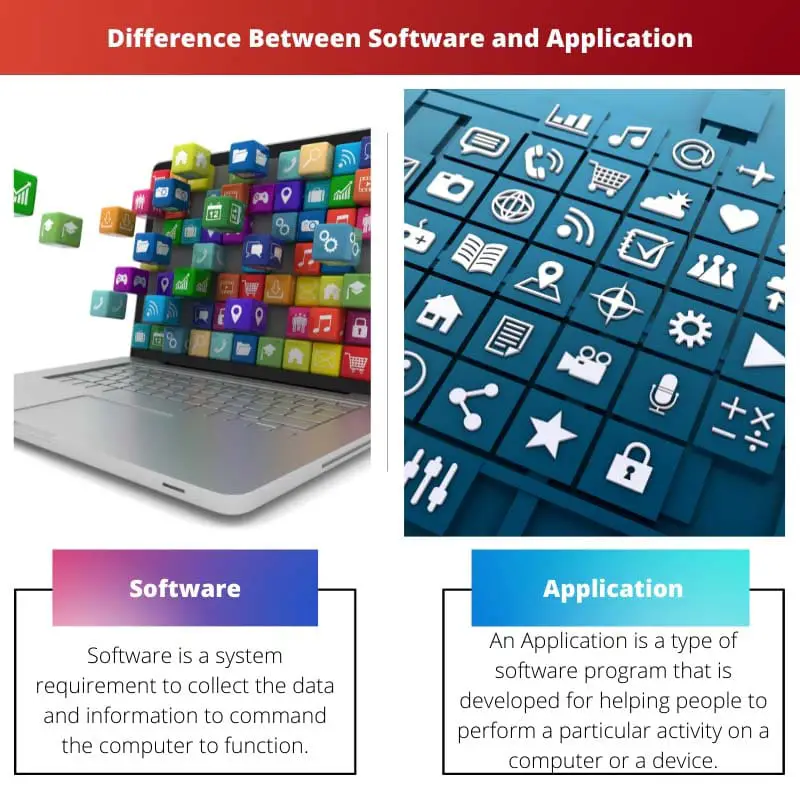Computers emerged from a serious urge to overcome the extreme difficulty in the number of crunch-crisis rather than for leisure and e-mails.
The United States population had increased by 1880, because of which it took 7 years to tabulate their Census results.
The challenge was quickly accomplished by increasing the number of punch-card-based computers (consumed the whole room).
That was in the past. Nowadays, tabulation has become way too easier than it was before. People use smartphones with more processing resources.
Also, sending emails, gaming, using the internet, and sharing or downloading multimedia have become common things with computer hardware and software.
Key Takeaways
- Software is a set of programs, data, and instructions that tell a computer what to do, whereas an application is a type of software designed for a specific purpose or task.
- The software includes both system and application software, whereas an application is a type of software.
- The software can be classified into different categories, such as open source, freeware, shareware, and commercial, whereas applications are commercial software.
Software vs. Application
The difference Between Software and Application is that an application is a sub-type of software. At the same time, the software is a system requirement to collect the data and information from commanding the computer to function. It could comprise any computer data and tasks. On the contrary, an app can be assigned to do a particular task.

Comparison Table
| Parameters of Comparison | Software | Application |
|---|---|---|
| Definition | Software is a system requirement to collect the data and information from commanding the computer to function. | An Application is a software program developed to help people perform a particular activity on a computer or a device. |
| Type of Software | It is a type of computer software. | It is a type of software program. |
| Correlation | The software includes different computer data, including application software. | Application software is one of the sub-type of a software program. |
| Tasks | It comprises any of the computer data and tasks. | It is assigned to do a particular task or some integrated tasks. |
| Administration | This software may administer or not. | This software always administers. |
| Performance | It is the mediator between the hardware and the user. | The user directly uses it. |
| User Intercommunication | To keep the software working, it does not require users to engage. | To keep the software working, it requires users to interact. |
| Operating System | Usually, it does not depend on an operating system. | It is based on working with an operating system. |
| Program | Every software cannot be an application. | Every application is software. |
What is Software?
Software is a program requirement to collect the data and information from commanding the computer to function.
It corresponds with the hardware on which the machine is built and truly accomplishes the task.
Most of the software systems are written in high-level computer language.
These languages are more manageable and capable of understanding as they are similar to fundamental languages rather than machine languages. There are different types of software programs:
- System Softwares:
- Operating System Software,
- Device Driver Software,
- Utility Softwares,
- Application Softwares,
- Malicious Softwares.
It is computer software that comprises any of its data and tasks. It does not require user interaction; it can work on itself once the computer or device is started. It is the mediator between the hardware and the user.

What is Application?
An Application is a software program developed to perform a particular activity on a computer or a device. It is also called an application program or software or, shortly, an ‘app.’
It corresponds with the hardware on which the machine works or runs.
Every application is software. The ultimate user directly uses, launches, and interacts with the function. It is an operating system-based program.
An app can do one task specifically or some integrated tasks together (depending on its development).
The tasks performed by an app can be the manipulation of numbers, texts, audio, visual graphics, or a combination of them all.
A few do only one task, and others (integrated) can perform various tasks. This software can be of any type or perform many functions, such as:
- Database Softwares,
- Business Softwares,
- Editing Softwares,
- Video games Software,
- Educational Softwares,
- Medical Softwares,
- Simulation Softwares,
- Mathematical Softwares,
- Entertainment Softwares,
- Telecommuting software, and many more.
The list can be infinite as they are made to execute multiple tasks.

Main Differences Between Software and Application
- The former is the type of computer software. Whereas the latter is a type of software program.
- Software is a system requirement to collect and command the information for the computer to function. At the same time, an Application is a type of software program. It is developed to help people to perform a particular activity on a computer or a device.
- The software includes different computer data, and Application software is one of its sub-type.
- Programming software is comprised of any data and tasks that a computer performs. On the other hand, the app can be assigned to do particular or integrated tasks.
- The software can be called the mediator between hardware and the user. Contrarily, the direct user uses the app.
- The previous program does not require users’ engagement to work. But the succeeding needs users to interact.
- Not all software depends upon an operating system. But the application is based on it to work.
- The first one may administer or not, whereas the second always does.
- Every software cannot be an application. Conversely, every application is software.

- https://dl.acm.org/doi/abs/10.1145/359511.359522
- https://onlinelibrary.wiley.com/doi/abs/10.1002/smr.220
- https://link.springer.com/chapter/10.1007/978-94-017-0647-6_9
This article has been written by: Supriya Kandekar




